- Home
- T. S. Eliot
The Waste Land
The Waste Land Read online
t h e a n n o t a t e d w a s t e l a n d
w i t h e l i o t ’ s c o n t e m p o r a r y p r o s e
edited, with annotations and introduction, by
l a w r e n c e r a i n e y
The Annotated
Waste Land
Eliot’s
with
Contemporary
Prose
Second Edition
y a l e u n i v e r s i t y p r e s s
n e w h a v e n & l o n d o n
First published 2005 by Yale University Press.
Second Edition published 2006 by Yale University Press.
Copyright © 2005, 2006 by Lawrence Rainey.
All rights reserved.
This book may not be reproduced, in whole or in part, including illustrations, in any form (beyond that copying permitted by Sections 107 and 108 of the U.S. Copyright Law and except by reviewers for the public press), without written permission from the publishers.
Set in Scala by Duke & Company, Devon, Pennsylvania
Printed in the United States of America.
Library of Congress Control Number: 2006926386
A catalogue record for this book is available from the British Library.
The paper in this book meets the guidelines for permanence and durability of the Commit-tee on Production Guidelines for Book Longevity of the Council on Library Resources.
ISBN-13: 978-0-300-11994-7 (pbk. : alk. paper)
ISBN-10: 0-300-11994-1 (pbk. : alk. paper)
10 9 8 7 6 5 4 3 2 1
c o n t e n t s
i n t r o d u c t i o n
1
A Note on the Text 45
the waste land
57
Editor’s Annotations to The Waste Land 75
Historical Collation 127
e l i o t ’ s c o n t e m p o r a r y p r o s e
London Letter, March 1921 135
The Romantic Englishman, the Comic Spirit, and the
Function of Criticism 141
The Lesson of Baudelaire 144
Andrew Marvell 146
Prose and Verse 158
v i
c o n t e n t s
London Letter, May 1921 166
John Dryden 172
London Letter, July 1921 183
London Letter, September 1921 188
The Metaphysical Poets 192
Notes to Eliot’s Contemporary Prose 202
s e l e c t e d b i b l i o g r a p h y
251
g e n e r a l i n d e x
261
i n d e x t o e l i o t ’ s c o n t e m p o r a r y p r o s e
267
Illustrations follow page 74
t h e a n n o t a t e d w a s t e l a n d
w i t h e l i o t ’ s c o n t e m p o r a r y p r o s e
Introduction
Lawrence Rainey
w h e n d o n a l d h a l l a r r i v e d in London in September 1951, bear-
ing an invitation to meet the most celebrated poet of his age, T. S. Eliot,
he could only marvel at his strange good fortune. A young and aspiring
American poet, he had earlier been an editor of Harvard University’s cele-
brated literary magazine, the Advocate—as Eliot had once been—and
more recently won a fellowship to Oxford—as Eliot had done, too, long
ago, in 1914. Now he was going to meet the great man himself, the poet
of his age, the man awarded the Nobel prize for literature in 1948. Hall
was frankly terrified. His appointment was for three in the afternoon, but
he turned up an hour early at the oªce of Eliot’s employer, Faber and
Faber, at 24 Russell Square, then decided to kill time by admiring the sur-
rounding buildings. Finally, at three, he was duly escorted to Eliot’s small
oªce and greeted by Eliot himself, a person as diªdent and distant as re-
port had portrayed him. Their conversation went poorly. “I was so convinced
of the monumentality of this moment—‘I will be speaking of this, ages
hence’—that I weighed every word as if my great-grandchildren were lis-
tening in, and I feared to let them down by speaking idiomatically, or by
seeing the humor in anything.” Eliot commented on some of Hall’s poems,
the hour passed swiftly, and by four it was time for Hall to leave. He leapt
to his feet, sputtered ponderous thanks, and awaited Eliot’s farewell:
1
2
i n t r o d u c t i o n
Then Eliot appeared to search for the right phrase with which
to send me o¤. He looked me in the eyes, and set o¤ into a
slow, meandering sentence. “Let me see,” said T. S. Eliot, “forty
years ago I went from Harvard to Oxford. Now you are going
from Harvard to Oxford. What advice can I give you?” He
paused delicately, shrewdly, while I waited with greed for the
words which I would repeat for the rest of my life, the advice
from elder to younger, setting me on the road of emulation.
When he had ticked o¤ the comedian’s exact milliseconds of
pause, he said, “Have you any long underwear?”
I told him that I had not, and paused to buy some on my
dazzled walk back to the hotel. I suppose it was six months
before I woke up enough to laugh.1
The reader who comes to Eliot’s masterpiece for the first time faces
much the same dilemma as Hall did. The poem is preceded by its reputa-
tion, endowed with authority so monumental that a reader is tempted to
overlook the poem itself, to slight its grisly comedy or miss its mordant
and ferocious wit, its dazzling series of surprises, its sheer wildness and
irredeemable opacity. While Eliot’s status as an international celebrity has
plainly waned since his death in 1965—what other poet could give a lec-
ture in a basketball arena holding fourteen thousand spectators, as Eliot
did in 1956?—his most important poem still retains its lacerating power
to startle and disturb.
e l i o t ’ s c a r e e r b e f o r e t h e w a s t e l a n d
Thomas Stearns Eliot was born in St. Louis, Missouri, on 26 September
1888, the last of six children. He had four sisters, the oldest of whom was
nineteen years his senior, and one brother, Henry, who was nine years
older. His mother and father were already in their forties by the time Eliot
was born. His father, Henry Ware Eliot, was a successful businessman
and president of the Hydraulic-Press Brick Company. But Eliot seems
never to have been very close to him. Instead it was to his mother, Char-
lotte, that Eliot was drawn. Proud of her intelligence, she had not been
able to attend university and instead had earned her living as a teacher
until she met her husband. She had also written poetry. Her thwarted am-
bitions were transferred to her son, who was nurtured to become a scholar,
i n t r o d u c t i o n
3
perhaps even a poet. From what little can be discerned, Eliot was a shy
and bookish boy, one who felt somewhat out of place wherever he was.
His family maintained a strong sense of its origins in New England—his
grandfather had moved from there to St. Louis in 1834—a sense which
made him feel out of place in the South. But he was no less aware of his
Missouri drawl when the f
amily took its annual vacation in Gloucester,
Massachusetts.2 He was also isolated by a physical handicap, a congenital
double hernia, which meant he had to wear a truss for most of his life and
could not participate in sports. Eliot later recalled that his family had “lived
on in a neighborhood which had become shabby to a degree approaching
sluminess, after all our friends and acquaintances had moved further west.”3
The area was being taken over by poor African Americans, and Eliot’s life-
long appreciation of popular song and his responsiveness to the seedy
side of urban life owed something to this background.4
When he was seven or eight, Eliot began to attend a local private
school. In the autumn of 1898 he began to attend Smith Academy, a prepa-
ratory school for Washington University, a prestigious university in St.
Louis, which Eliot’s grandfather had helped found. By January 1899, he
already had brought out eight issues of his own magazine, the Fireside, a
childish production that featured adventure stories, rhyming verses, and
puns. Though he finished Smith Academy in 1905, his mother decided
to wait a year before sending him to Harvard, a year he spent at Milton
Academy, a private school outside Boston. There he met Scofield Thayer,
a wealthy young man who later became co-owner and leading editor of
the Dial, the journal in which The Waste Land was first published in the United States.
In the autumn of 1906 Eliot began his undergraduate studies at Har-
vard. In his second year he decided to complete his course for a bachelor’s
degree in three years rather than the conventional four. His courses cov-
ered a wide range of topics: German grammar, constitutional government,
Greek literature, medieval history, English literature, French literature,
ancient philosophy, modern philosophy, and comparative literature. But
much that Eliot wanted to learn could not be discovered in the classroom.
He was actively reading on his own. He later recalled the Scottish poet
John Davidson (1857–1908), and especially his poem “Thirty Bob a Week,”
with its stark presentation of a city clerk. He had “found inspiration in
the content of the poem,” Eliot later recalled, “and in the complete fitness
4
i n t r o d u c t i o n
of content and idiom: for I also had a good many dingy urban images to
reveal.”5 More important, however, was his discovery of Arthur Symons,
whose study of The Symbolist Movement in Literature he purchased in De-
cember 1908. The book was “one of those which have a¤ected the course
of my life,” he said many years later.6 Above all it led Eliot to the discovery
of the French poet Jules Laforgue (1860–1887), the author who was “the
first to teach me how to speak, to teach me the poetic possibilities of my
own idiom of speech.”7 Eliot promptly ordered the three volumes of La-
forgue’s Oeuvres complètes, which reached him in the spring of 1909. In
Laforgue’s poetry Eliot found much that he could adapt to his own use:
the couplets turned by neat rhymes, the counterpoint achieved by inter-
weaving stanzas with di¤erent imaginative weight and line length, and a
tone that was questioning, quizzical, ironical, inconclusive. Within months
the poems which Eliot was publishing in the Harvard Advocate were plainly
showing the influence of Laforgue, even announcing it in their titles:
“Nocturne” in November 1909, “Humouresque (after J. Laforgue)” and
“Spleen” in January 1910. But influence should not be taken to imply pas-
sive imitation. “People are only influenced in the direction in which they
want to go,” Eliot wrote much later, “and influence consists largely in mak-
ing them conscious of their wishes to proceed in that direction.”8 But what
was the direction in which Eliot wanted to go? Conrad Aiken, whom Eliot
met in the academic year 1909–1910, when he stayed on at Harvard for
an extra year to study for an M.A., later recalled their conversations: “What
did we talk about? or what didn’t we? It was the first ‘great’ era of the comic
strip, of Krazy Kat, and Mutt and Je¤, and Rube Goldberg’s inspired luna-
cies: it was also perhaps the most creative period of American slang, and
in both these departments of invention he took enormous pleasure.”9
Eliot’s interest in “American slang” and “the comic strip,” his openness
to vernacular culture, may go a long way toward explaining why even the
poems which most directly evince the influence of Laforgue possess a col-
loquial vigor that sets them apart.
Having finished his M.A., Eliot spent the summer of 1910 patiently
transcribing all the poems he had been writing, assembling them into a
volume which he titled Inventions of the March Hare, a collection which
has recently been published in its entirety.10 Then he set o¤ for Paris, much
to his mother’s consternation.11 In Paris he was fortunate to meet and ex-
change conversation lessons with Henri Alain-Fournier (1886–1914), the
i n t r o d u c t i o n
5
young writer whose modern classic Le grand Meaulnes was to be published
in 1912. Alain-Fournier, who shared Eliot’s interest in Jules Laforgue, was
the brother-in-law and close friend of Jacques Rivière (1886–1925), editor
of the Nouvelle revue française, a literary journal which, though founded
only in 1909, was already considered the most important review in Paris.
Eliot met Rivière on one occasion, but nothing further came of their en-
counter.12 Eliot’s other friendship in Paris was forged with Jean Verdenal
(1890–1915), a young medical student who lived in the same pension as
Eliot and shared his literary interests. It may have been Verdenal who intro-
duced Eliot to the work of Charles Maurras (1868–1952), a conservative
ideologue who in 1899 had created an organization called L’Action fran-
çaise, a nationalist and royalist group that responded to the ongoing crisis
in French cultural life precipitated by the Dreyfus a¤air. How deeply
Maurras influenced Eliot has been a subject of much debate.13
In January and February 1911, while still living in Paris, Eliot went to
hear five lectures by the French philosopher Henri Bergson at the Collège
de France, and he later said that he had experienced a “temporary conver-
sion to Bergsonism.”14 Meanwhile, he was writing more poems, including
“Entretiens dans un parc,” “Interlude: In a Bar,” “Bacchus and Ariadne,”
and “The Smoke That Gathers Blue and Sinks.”15 A few months later, in
April, he journeyed to London for the first time, taking in many traditional
sites: the National Gallery, the British Museum, Hampton Court, and, as
he noted in a letter to a friend, “the City—Thoroughly” ( LOTSE, 19). Eliot, of course, was referring to the financial district of London, known as the
City, the principal locale for The Waste Land. In July, before returning to the United States, he took a trip to Munich, where he somehow met a former lady of the imperial court of Vienna: a memory of their conversation
would also enter into The Waste Land (see ll. 15–17 and notes; see Figs. 1,
2, 3). While in Munich, Eliot al
so completed the final version of “The Love
Song of J. Alfred Prufrock,” and a few months later he completed “Portrait
of a Lady”—the two most important works of his early maturity. Already
by now, at the age of twenty-three, Eliot had found his voice—or rather,
voices. For Eliot possessed an uncanny gift for juxtaposing snippets of
wistful lyricism against moments of mordant self-reflection, and setting
o¤ both these against dry, matter-of-fact records of urban decay.
“I had at that time,” Eliot later recalled of his year in Paris, “the idea
of giving up English and trying to settle down and scrape along in Paris.”16
6
i n t r o d u c t i o n
But he had plainly changed his mind by the time he left. Eliot was never
very confident of his own powers; his acute self-awareness entailed acute
self-doubt. Who could assure him that his poems were anything more
than highly intelligent jeux d’esprit? And there was pressure from his
family to take up a safe and respectable profession. Eliot chose to become
an academic, and enrolled as a graduate student in the philosophy depart-
ment at Harvard. It was to be his home, or perhaps his prison, for the next
three years. He took a variety of courses, some of which left an impress
on The Waste Land. In his first year he studied Sanskrit in C. R. Lannon’s
course in Indic philology. In his second he studied Indian philosophy in
classes taught by James Haughton Woods. He also took a course on Bud-
dhism, given by Masaharu Anesaki. In “The Fire Sermon” and “What the
Thunder Said,” parts III and V of The Waste Land, Eliot was to draw on
key texts which he had encountered in these classes, including the Upani-
shads and a sermon by the Buddha. In his third year Eliot took a course
entitled “A Comparative Study of Various Types of Scientific Method,”
taught by Josiah Royce, as well as another on symbolic logic taught by the
distinguished philosopher Bertrand Russell, whom he impressed.17 Critics
have long debated the significance of these courses for Eliot’s poetic and
intellectual development. Eliot’s was a restless mind, simultaneously seek-
ing out religious certainties from remote cultures and exploring the skepti-
cism inherent in comparative approaches. One thing is certain: apart from
some ribald ballads, Eliot wrote very little during his three years at Harvard.

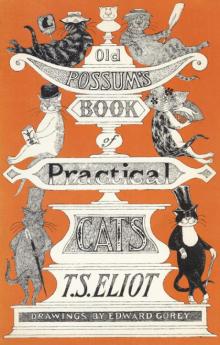 Old Possum's Book of Practical Cats
Old Possum's Book of Practical Cats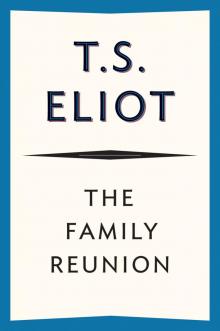 The Family Reunion
The Family Reunion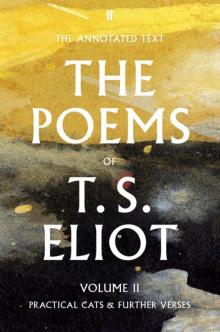 T. S. Eliot the Poems, Volume 2
T. S. Eliot the Poems, Volume 2 The Waste Land
The Waste Land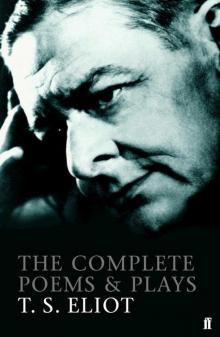 The Complete Poems and Plays, 1909-1950
The Complete Poems and Plays, 1909-1950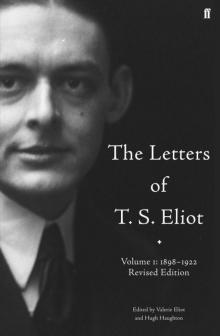 Letters of T.S. Eliot: 1898-1922
Letters of T.S. Eliot: 1898-1922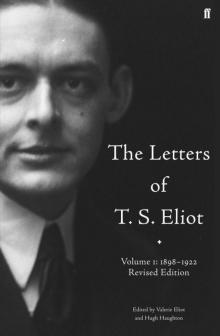 The Letters of T. S. Eliot, Volume 1: 1898-1922
The Letters of T. S. Eliot, Volume 1: 1898-1922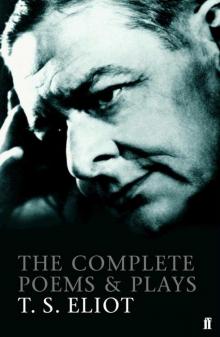 Complete Poems and Plays
Complete Poems and Plays